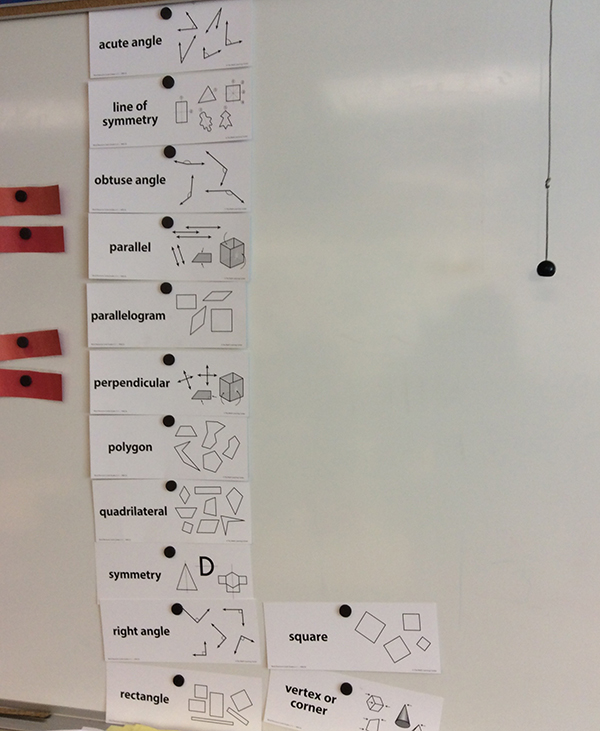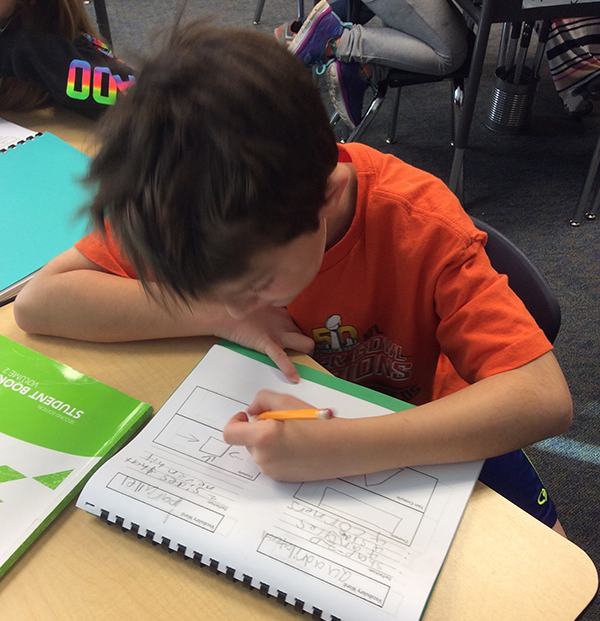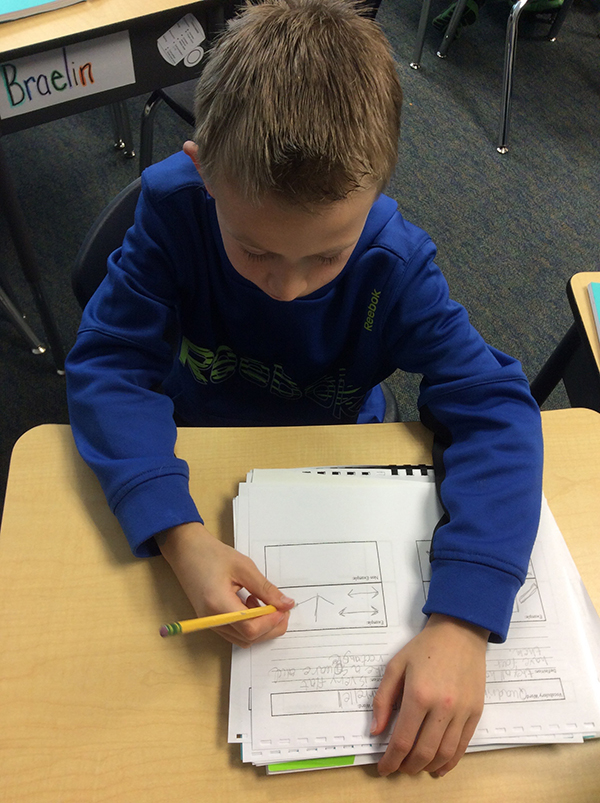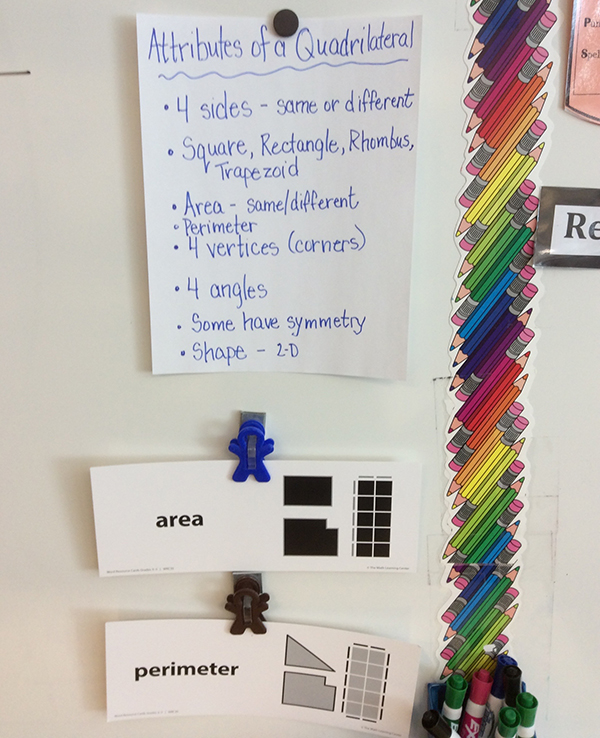
Math Vocabulary – Another Language
All students at my school learn the Spanish language all year long—the culture, how to speak, to understand, and so on. Another language they engage in all year long is the math language we use.
It might seem intuitive or a part of everyday language, but math vocabulary can be very challenging. There are some steps you can take, however, to make this language more available to all of your students.

One of the easiest things you can do is display the math vocabulary you are currently using. Word Resource Cards, with illustrations on one side and a definition on the other, give your students several routes to understanding the term. When the cards displayed and within easy reach, students often use them as they complete projects and assignments.

Another opportunity to incorporate vocabulary is to have your students make a “Math Vocabulary Dictionary” in their math journals. As new vocabulary arises, students add the words, a definition, and an illustration to their personal dictionaries. I ask my students to include an illustration that is a good example and another illustration that is a good non-example.

Another thing we regularly do is to create an anchor chart for different words, such as quadrilateral. As a class, we discuss, brainstorm and list the attributes of the vocabulary word then record our ideas on a piece of chart paper. These charts stay displayed throughout the unit so students can refer to them continually.

By incorporating simple activities like these, you’ll help make the language of math accessible to all of your students.